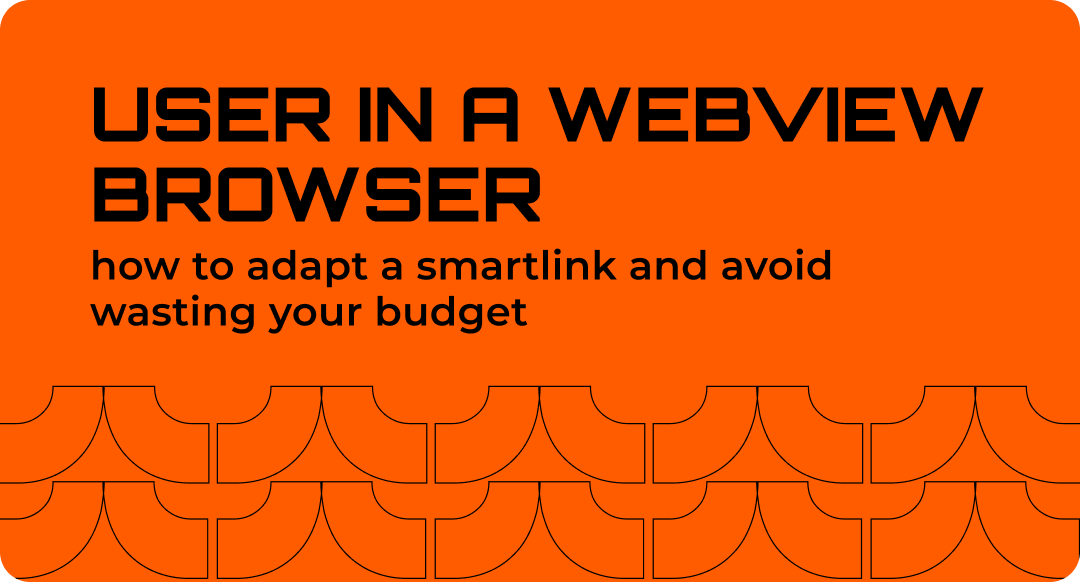User in a WebView browser: how to adapt a smartlink and avoid wasting your budget

In the world of affiliate marketing, every click matters. But when a user opens a page not in a regular browser, but in a built-in WebView, some functions simply stop working: tracking fails, scripts break, pop-ups disappear. As a result, traffic, conversions, and budget are lost.
When classic funnels lose effectiveness due to WebView limitations, a smartlink comes to the rescue – a tool that solves this problem without losing conversions. This is exactly what Resality specializes in – an affiliate network in the dating vertical that focuses on smartlink technology. Today, the Resality team will explain how to set up a smartlink for WebView traffic and avoid mistakes that lead to budget losses.
What is WebView and why it matters
Before figuring out how to adapt a smartlink for WebView, it’s important to understand what it is and what role it plays in an affiliate’s funnel.
WebView is an embedded browser inside a mobile app. Instead of opening your landing page in Chrome or Safari, the user sees a simplified version of it directly inside TikTok, Facebook, Instagram, or an in-app push network.
The problem is that this “lightweight” browser significantly limits functionality that is critical for affiliates:
JavaScript scripts and redirects don’t work properly;
pop-up elements are blocked;
no standard option to open pages in a new tab;
issues with subscription offers on iOS (iOS blocks third-party subscriptions in WebView because Apple requires all transactions to go through the App Store);
increased risk of losing tracking and analytics.
In practice, for example with a dating offer, WebView often becomes the reason campaigns fail. To avoid this, the funnel should be set up with a smartlink that automatically detects when a user opens the page in WebView and adapts the flow accordingly.
Common mistakes that drain your budget
Imagine a standard funnel: traffic → creative → prelander → offer. In a regular browser, everything runs smoothly. But once WebView comes into play, issues like these often appear:
showing subscription offers on iOS inside WebView, where the target action is technically impossible;
using landing pages with heavy scripts or multiple redirects that often break in WebView;
no traffic filtering by browser type or device;
applying one logic to all traffic without adapting for WebView;
ignoring user behavior in WebView, where a click happens but the target action doesn’t.
That’s why a smartlink is not just a convenience – it’s a necessity. The Resality smartlink helps you avoid these traps and turns even tricky traffic into a working tool.
How to adapt a smartlink for WebView
A smartlink is a tool that can turn “problematic” WebView traffic into a stable source of conversions – but only if it’s set up with the technical limitations and user behavior in mind. Here are concrete strategies to get the most out of every click.
Traffic Segmentation
Properly configured segmentation allows you to show users only the offers that will technically work on their device and browser. This is especially critical for WebView:
iOS WebView – only non-subscription offers, e.g., registration with a bonus or coin-based models;
Android WebView – careful testing of subscription offers is possible, or immediately offer other models (e.g., coin-based).
In this case, the smartlink distributes users and determines at the click stage where to direct them, maximizing the chance of conversion.
Fallback Logic
Even with well-configured segmentation, situations can arise where the main offer cannot open or execute properly. This may happen due to technical glitches, content blocking, or unexpected browser behavior. In such cases, fallback logic comes to the rescue – a backup display scenario that automatically activates if the primary route is unavailable.
A Smartlink with fallback settings checks:
device type and operating system;
whether the user is on a regular browser or WebView;
user GEO.
If the main offer isn’t the best fit for these parameters, the system presents an alternative that is technically compatible. For example:
a user on iOS WebView receives a registration offer without a subscription instead of a blocked subscription model;
if there’s a problem loading the landing page, the Smartlink redirects to a backup pre-lander.
Pre-lander Optimization
In WebView, every extra script or heavy element on the page increases the risk that the user won’t wait for the page to load or won’t see the call-to-action or other elements leading to a conversion. Therefore, pre-landers for this format should be as light and fast as possible.
Recommendations:
minimize the use of JavaScript;
make the design responsive for any device;
avoid pop-ups that are often blocked and autoplay videos that slow down loading;
use concise content and optimized images to reduce page weight;
check how the pre-lander displays on different devices and WebView versions.
Detecting WebView via User-Agent
For a smartlink to choose the correct route for a user, it first needs to determine whether the page is opened in a standard browser or inside a WebView. The best way to do this is by analyzing the user-agent.
The user-agent is sent to the server by the browser when the page loads. It contains information about the device, OS, and browser version. If the page is loaded through WebView, the user-agent will indicate this. This is how the type of opening is identified.
The Smartlink reads the user-agent and, based on the data, determines:
whether it’s a WebView, and if so, on which platform;
which browser is being used if it’s not WebView;
which offer to redirect the user to.
Thanks to this check, the entire process happens automatically, without your intervention, and every user is directed to a scenario that is technically appropriate for them.
User behavior in WebView
Users in WebView often behave differently compared to a regular browser. The reason is simple — limited functionality, less comfortable browsing, and the absence of familiar navigation tools. This is important to consider, as these nuances directly affect conversions.
Typical user behavior in WebView:
clicks intuitively but does not complete actions;
spends very little time on the page;
avoids entering payment information;
quickly closes the page, especially on iOS.
Understanding this behavior helps configure the Smartlink to guide users through the simplest possible scenarios — without extra steps, complex forms, or elements that might not display.
Conclusion and practical tips
WebView is not a dead end for your funnel if approached systematically. At Resality, all technical settings are handled on the smartlink side, such as:
using pre-landers without heavy scripts or multiple redirects;
no subscription offers for iOS;
traffic segmentation: separate funnels for different OS and browser types;
fallback offers in case the main one fails.
There are also a few practical tips affiliates can implement before running traffic in WebView:
create scripts to redirect users from WebView to the default browser;
add UTM tags to track WebView traffic performance;
build separate, lightweight pre-landers specifically for WebView.
These actions will help turn WebView traffic into a stable revenue source and avoid unnecessary losses.
Sign up with Resality and get access to ready-made funnels optimized for WebView traffic – and more – so you can scale without technical headaches.
